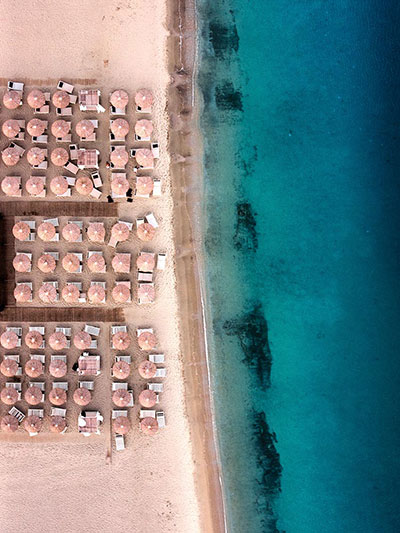 |
|
Kalo Livadi beach [Photo/Courtesy of Filippos Economou] |
The town, one of the most stunning in all the Cyclades, is flat – an exception to the rule elsewhere. Its defining feature is the labyrinth of twisting, tapering alleys – its disorienting layout designed to protect locals from marauding pirates. Even today, it is inevitable for first-time visitors to get lost in the tangled lanes, returning to the same spot time after time in search of clues about which path to follow.
Mykonos has one quintessential symbol visible from far away: the windmills. They have stood proudly to the southeast of Hora since the 15th century. These three-level cylindrical mills, with their narrow windows and thatched roofs, played a vital part in the island's economy, providing flour for the countless ships that sailed the Aegean. The millers took advantage of the strong winds; the spinning white triangular sails tirelessly turned the granite millstones that ground the grain to flour.
Chapels are also ubiquitous on Mykonos. Nobody knows exactly how many; some say 600, others claim more than 1,000. Locals continue to build churches even today, and on the eve of a saint's day, vespers are followed by a communal feast with singing and dancing, a living trace of ancient sacrifices to the gods.
The Byzantine Panagia Paraportiani is often described as the "Parthenon of folk architecture". Built in the late 16th or early 17th century in Kastro, its name derives from paraporti, the secondary entrance to the medieval castle or city walls, which no longer exist.